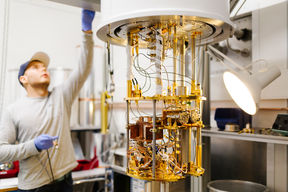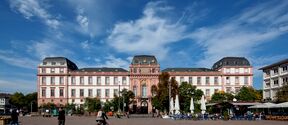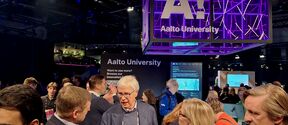Low Temperature Laboratory receives over one million euros in funding, opening more widely to European researchers

Established by Academician of Science Olli V. Lounasmaa in 1965, the Low Temperature Laboratory (LTL) is one of the world's leading research centres in low temperature physics, nanoelectronics, and quantum technology. The laboratory is part of the European Microkelvin Platform (EMP), which has received €10 million in total funding from the European Commission's Horizon 2020 programme for 2019-2022.
Aalto University’s share of the funding is about €1.2 million. It will be used for the development of research infrastructure, the organisation of new courses in cryogenic technology, and to support international research teams visiting and using LTL.
According to Professor Pertti Hakonen, director of the Low Temperature Laboratory, this funding strengthens the laboratory’s role in the European research landscape.
‘The plan is to open and develop the LTL infrastructure to serve a wider user community of quantum technology and quantum materials. The laboratory’s devices can be used for studying, for example, quantum coherence or topological superconductivity,’ Professor Hakonen says.
The research infrastructure is currently used by several research projects funded by the European Union, such as projects exploring Higgs particles and quantum heat valves.
Quantum teleportation and spooky interaction
In coming years, the EU will fund quantum physics and technology research for €1 billion under the Quantum Flagship project, in which several research groups from the national centre of excellence Quantum Technology Finland (QTF) are involved. In its Quantum Microwave Communication and Sensing (QMiCS) project, docent Mikko Möttönen and his team explores fundamental phenomena in quantum communications, such as teleportation of quantum states with microwave photons using superconducting circuits cooled down to near absolute zero.
Hybrid Optomechanical Technologies (HOT) is a project focusing on future technologies and funded by the Horizon 2020 programme of the European Union. In this project, Professor Mika Sillanpää and his research team succeeded, among other things, to bring two distinct and moving macroscopic objects into an entangled quantum state, the ‘spooky action’ with which Einstein was notoriously uncomfortable. LTL infrastructure was used for the experiments.
GRAPHENE is a Future & Emerging Technologies (FET) Flagship project funded by the European Union. Pertti Hakonen and his team succeeded in confirming a Wigner crystal in graphene in the Low Temperature Laboratory. This discovery can possibly be applied to quantum computing via unconventional, fractional particles.
‘We also develop ultrasensitive quantum sensors in the Low Temperature Laboratory, which are needed, for example, for nanoelectronics research. This gives us significant competitive advantage,’ Hakonen says.
The Low Temperature Laboratory is part of OtaNano, a national research infrastructure operating in the fields of nanoscience and technology, and in quantum technologies, established in 2013. This year it received funding of €1.5 million from the Academy of Finland for infrastructure updates. OtaNano is administered by Aalto University and VTT Technical Research Centre of Finland, and co-ordinated by Aalto University. EMP has received funding from the European Union’s Horizon 2020 research and innovation programme under grant agreement No 824109.
Further information:
Pertti Hakonen
Professor
Aalto University
pertti.hakonen@aalto.fi
tel. +358 50 344 2316
European Microkelvin Platform
Low Temperature Laboratory
Quantum Technology Finland
European Union projects using the Low Temperature Laboratory:
Quantum Flagship
Hybrid Optomechanical Technologies
GRAPHENE
Latest research news from the Low Temperature Laboratory:
Life on the edge in the quantum world - Taking shortcuts and driving at the quantum speed limit
More Higgs particles can be found by studying superfluid helium
Qubits as valves: controlling quantum heat engines
Ultimate precision for sensor technology using qubits and machine learning
Quantum physics and technology research receives billion-euro funding from the EU — Aalto University involved in three projects
Einstein’s “spooky action” goes massive!
First confirmation of a Wigner crystal in graphene paves the way for a new kind of quantum computing
Secrets of our universe live in a big blue cylinder
Time crystals may hold secret to coherence in quantum computing
Read more news

Aalto academics begin Unite! visiting professorships at TU Darmstadt
As part of the Unite! Visiting Professorship Programme, TU Darmstadt welcomed six visiting professors from Aalto University for the winter semester 2025/2026.
Aalto Stoa Archived
Aalto Stoa, the student-driven platform for Otaniemi campus design, has now been completed and archived for future reference.
Elites wield huge influence over deepening polarisation –– now we can tell exactly how much
Researchers used network theory to develop a method for measuring the impact of individuals on societal division.






